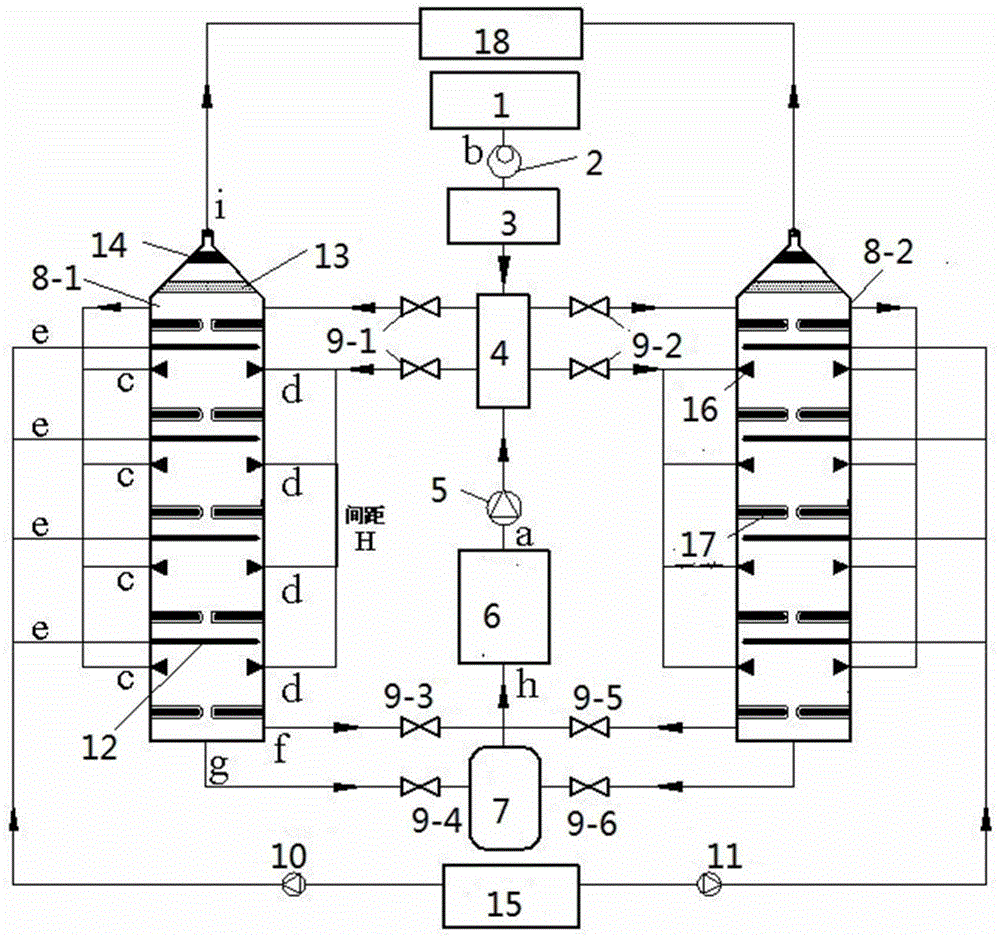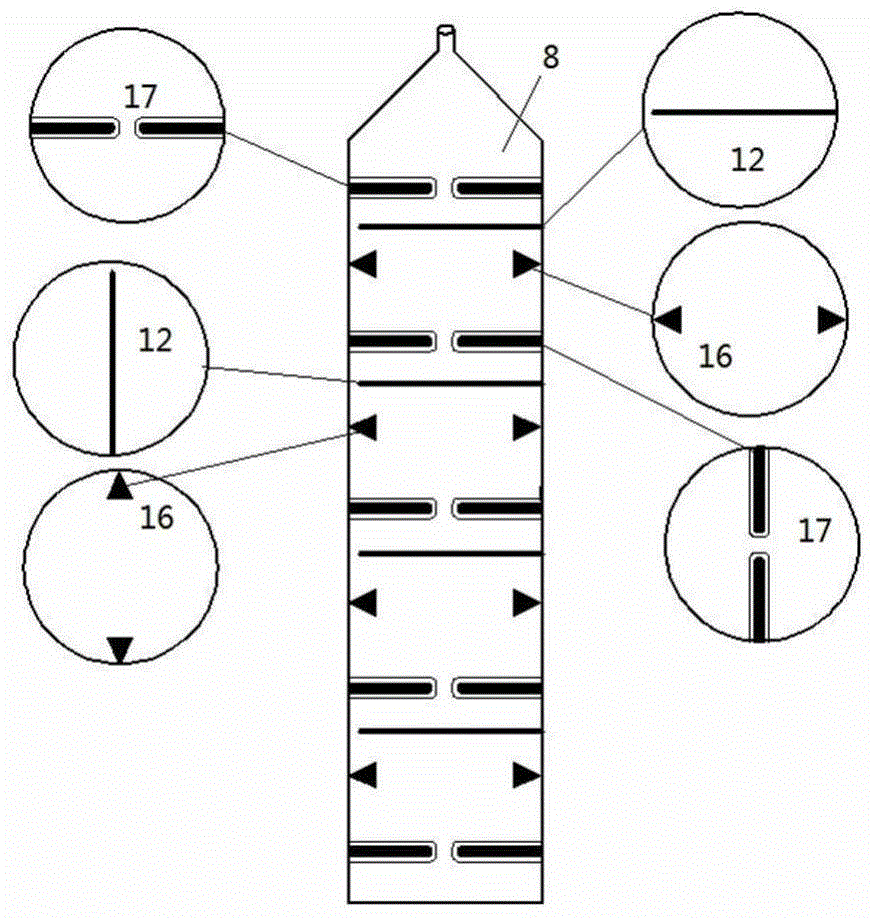Hydrogen sulfide removal method based on photocatalytic spraying
A technology of hydrogen sulfide and photocatalysis, applied in chemical instruments and methods, separation methods, inorganic chemistry, etc., can solve the problems of inability to meet environmental protection requirements, difficult product utilization, and low oxidation efficiency.
- Summary
- Abstract
- Description
- Claims
- Application Information
AI Technical Summary
Benefits of technology
Problems solved by technology
Method used
Image
Examples
Embodiment 1
[0075] Example 1. The flue gas inlet temperature of the impingement bed is 100°C, and the liquid-gas ratio is 0.5L / m 3 , the dosage of titanium dioxide is 0.1kg / m 3 , the concentration of hydrogen peroxide is 0.5mol / L, the pH of the solution is 3.4, the temperature of the solution is 70°C, the content of hydrogen sulfide in the flue gas is 300ppm, and the effective radiation intensity of ultraviolet light is 25μW / cm 2 , The effective wavelength of ultraviolet light is 254nm. The results of the small test are: the hydrogen sulfide removal efficiency reaches 58.2%.
Embodiment 2
[0076] Example 2. The flue gas inlet temperature of the impingement bed is 100°C, and the liquid-gas ratio is 0.5L / m 3 , the dosage of titanium dioxide is 0.1kg / m 3 , the concentration of ammonium persulfate is 0.5mol / L, the pH of the solution is 3.4, the solution temperature is 70°C, the content of hydrogen sulfide in the flue gas is 300ppm, and the effective radiation intensity of ultraviolet light is 25μW / cm 2 , The effective wavelength of ultraviolet light is 254nm. The results of the small test are: the hydrogen sulfide removal efficiency reaches 50.8%.
Embodiment 3
[0077] Example 3. The flue gas inlet temperature of the impingement bed is 100°C, and the liquid-gas ratio is 0.5L / m 3 , the dosage of titanium dioxide is 0.3kg / m 3 , the concentration of hydrogen peroxide is 0.5mol / L, the pH of the solution is 3.4, the temperature of the solution is 70°C, the content of hydrogen sulfide in the flue gas is 300ppm, and the effective radiation intensity of ultraviolet light is 25μW / cm 2 , The effective wavelength of ultraviolet light is 254nm. The results of the small test are: the hydrogen sulfide removal efficiency reaches 67.2%.
PUM
 Login to View More
Login to View More Abstract
Description
Claims
Application Information
 Login to View More
Login to View More - R&D
- Intellectual Property
- Life Sciences
- Materials
- Tech Scout
- Unparalleled Data Quality
- Higher Quality Content
- 60% Fewer Hallucinations
Browse by: Latest US Patents, China's latest patents, Technical Efficacy Thesaurus, Application Domain, Technology Topic, Popular Technical Reports.
© 2025 PatSnap. All rights reserved.Legal|Privacy policy|Modern Slavery Act Transparency Statement|Sitemap|About US| Contact US: help@patsnap.com



